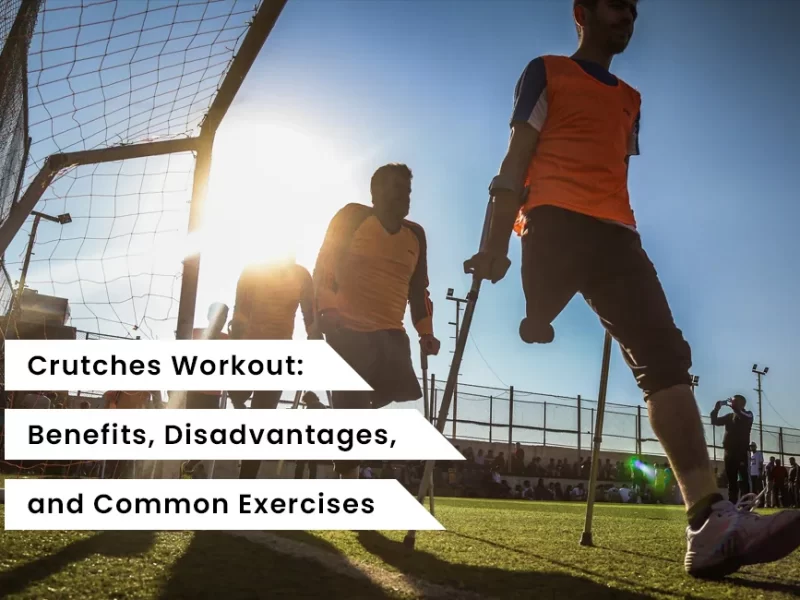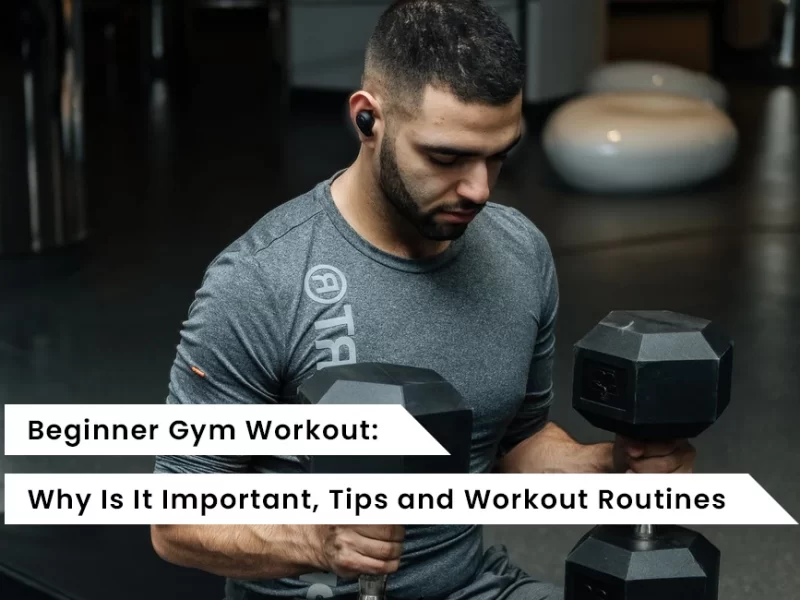Table of Contents
A Latissimus Dorsi workout is a great way to build muscle, burn fat and tone your body. This workout is designed to target the muscle behind your upper arm. In this article, we will discuss how we can start this workout, and what we should do before doing the Latissimus Dorsi Workout.
What is Latissimus Dorsi
Latissimus Dorsi, more commonly referred to as the lats, is a big, flat, triangularly shaped muscle that covers the width of your middle and lower back. You, of course, have two lats, one on each side of your spine.
The word “latissimus dorsi” comes from Latin, with ‘latissimus’ meaning ‘broadest’ and ‘dorsum’ meaning ‘back’. The name perfectly describes the muscle.
It is the largest and broadest muscle of your back. In fact, it’s the largest muscle in your entire upper body.
When people say “build back width”, they are referring to the lats. If developed enough, you’ll have that awesome aesthetic v-taper.
What does Latissimus Dorsi Workout do to your body?
Latissimus Dorsi workout is a body exercise that focuses on the back muscles. It helps to strengthen and tone muscles, which leads to improved posture, increased strength, and an overall better appearance.
Latissimus Dorsi workout primarily focuses on strengthening your back and chest muscles, which are vital for any fitness regimen. It also helps to improve posture, balance and coordination in addition to reducing fatigue in the lower extremities.
Latissimus Dorsi Workout has been proven to be helpful in treating chronic back pain, arthritis, and injuries. It can also help with muscle recovery after surgery.
Lastly, Latissimus Dorsi workout strengthens this muscle which in turn makes it more resistant to injury, strengthens your core muscles, and improves balance and coordination.
How to do the Latissimus Dorsi Workout?
There are three main types of exercises for the lats:
- Vertical Pulls (i.e. pull ups, pulldowns)
- Horizontal Pulls (i.e. rows)
- Shoulder Extension Exercises (i.e. pushdowns)
If you want well developed lats, you need to do each of these three types of movements, as each one targets the lat muscle differently.
You need to consider your arm movement when lifting, as that will determine which region of the lat is being worked more or worse.
Shoulder adduction targets the upper lats best (i.e. wide grip pull ups), horizontal abduction targets the middle lats best (i.e. rows), and shoulder extension targets the lower lats best (i.e. pushdowns).
Depending on your grip and angle of your body, the action of your shoulder joint can change, which in turn means your back muscles are worked differently.
Grip positioning plays an important role in determining which region of the muscle is at the greatest advantage, not to mention, whether the lat is the primary focus or not.
For example, overhand barbell rows will work your middle lats more because it involves more horizontal abduction with your arms flared out, whereas reverse grip keeps your elbows tucked thus making the movement act more on shoulder extension. So, with the same bent over row, you can target your middle or lower lat more simply by changing the grip.
The same is true for vertical pulls. With wide grip pulldowns or pull ups, the movement will be more shoulder adduction, whereas with a close grip, your elbows are tucked and the movement acts on shoulder extension.
This is why variety is key. By changing grip and performing vertical and horizontal pulls as well as shoulder extension based movements, you will be able to develop your lats as fully.
Now, it should be noted that no matter what lat exercise you are doing, your entire latissimus dorsi will be working. You cannot isolate your upper, middle or lower lats. Again, it’s just certain regions will be activated more or less. Certain movements also do a better job of activating the lat as whole too. So, of course, we are going to make those primary for our best latissimus dorsi exercises to come.
The point of all this is, variety is key.
See also Do You Need a Pre-workout Supplement for Running?
Best Latissimus Dorsi Workouts
Pull-up
Nothing works your lats quite as well as a proper pull-up and, unlike with some moves on this list, you don’t have to pay as much attention to keeping your back straight because gravity will take care of that for you. Just don’t beat yourself up if you struggle when you’re starting out – pull-ups are hard.
Hang from a pull-up bar with your arms extended, hands shoulder-width apart and your palms facing away from you. Brace your core and slowly pull yourself up (keeping your back straight, of course) until your neck is above the bar. Pause, then lower in an equally controlled manner until your arms are straight again.
Lat pull-down
Remember when we said pull-ups are hard? This pull-up-like exercise can help you build up to them. There are no prizes for guessing which muscles the lat pull-down works, but there are definitely rewards for those who do it.
Sit in the lat pull-down machine with your legs beneath the padding. Grasp the bar with both arms extended, keeping your back straight. Slowly pull the bar down towards your chest, pause, then allow the bar to rise again under control – the release is just as important as the pulling phase.
Reverse-grip barbell bent-over row
If the hanging and the slamming weren’t taking your fancy, rowing might be the exercise for you. Stand in front of a barbell with your feet shoulder-width apart and a slight bend in the knees. Making sure your back is straight throughout, bend forwards – hinging at the hips – until your torso is nearly parallel to the ground. Grasp the barbell with an underhand grip, palms facing away from you, and hold it around shin height. Pull the barbell in towards your stomach, keeping your elbows tight to your body, until the bar touches your sternum, then lower slowly.
Dumbbell pull-over
If after all the pulling, slamming and rowing you feel like you need a little lie-down, finish your session with this move. Take care when selecting a weight and if in doubt go lighter. You’re going to be holding that weight above that gorgeous mug of yours.
Lie with your head and back flat on a bench, and your feet flat on the ground, holding one dumbbell in both hands with your arms extended above your chest. Keeping your arms extended, lower the dumbbell behind your head until it’s roughly level with your head, then bring it back up to above your chest. If you start to feel discomfort in your shoulders, don’t lower the weight any further; instead, go and work on your shoulder mobility and/or pick a lighter dumbbell.
Landmine row
Another great row to add to your repertoire, the landmine allows you to put the squeeze on your lats by attacking them from an angle the barbell or dumbbell row can’t manage. Take the weight plates off one end of a barbell and secure it by wedging it in a corner (or a dedicated landmine holder, if your gym has one). Load up the other end of the bar and straddle it, holding the weight in both hands in front of you. Lean forward so your torso is at a 45° angle to the floor and row the bar up to your chest by drawing your elbows back and squeezing your shoulder blades together. Lower it slowly.
Deadlift
While the deadlift is primarily known for strengthening the hamstrings and glutes, it’s also a move that will work the lats. Set up with a barbell on the floor just in front of your shins. Bend down and grasp the bar using an overhand grip with your hands just outside your legs. Keeping a flat back, lift the bar by driving your hips forwards and come up to standing. Lower the bar slowly and carefully – make sure you don’t start rounding your back here.
Is Latissimus Dorsi workout safe to do?
The answer is yes, but there are some precautions you should take before starting the workout. You should start with a light weight and slowly increase the amount of weight you use as your muscles adapt.
Latissimus Dorsi workout can be risky if done incorrectly. If you are new to this type of workout, start with low-intensity exercises and gradually increase the intensity as your body adjusts to it.
Also, Latissimus Dorsi workouts are safe to do if you have no pre-existing medical conditions or injuries. If you have any of these conditions, it is advised that you consult with your doctor first before doing this exercise.
Benefits of doing Latissimus Dorsi workout
The Latissimus Dorsi workout is an exercise that targets this muscle by moving your arms up and down. The Latissimus Dorsi workout can be done anywhere, anytime and with any equipment you have access to – making it one of the most convenient exercises to do.
These are some of the benefits of doing Latissimus Dorsi workout:
- It helps to improve posture, balance, and coordination.
- It improves your breathing and lung capacity.
- It strengthens your back muscles and lower back pain relief
- It helps to improve mental focus and concentration by relieving stress and tension in your neck, shoulders, chest, arms, elbows, wrists and hands
Negative Effects of doing Latissimus Dorsi workout
Latissimus Dorsi workout is a popular exercise that is used by people to build up their muscles. However, the workout can have negative effects on the body if not done properly.
The most common negative effect of doing Latissimus Dorsi workout is pain in the joints and muscles. This happens because of the weight being lifted in a very specific way and stress on the spine.
Some other side effects of doing this type of workout are:
- Loss of strength and muscle mass
- Injury to the spine, loss of mobility, and pain in the back
- Potential loss in performance
- Decreased range of motion in the shoulder joint
- Increased risk for injury to rotator cuff muscles, biceps tendon, and supraspinatus tendon
- Inability to perform other exercises with proper form
Common Injuries while performing the Latissimus Dorsi workout
What types of limitations can result from these lat-related injuries? While rupturing or tearing of the lats is rare, other related pains are common and these include:
Shoulder pain: The latissimus dorsi connects the spine to the humerus, so weakness or tightness in the lats/mid-back can cause pain in the shoulder joints and loss of upper body functions. Sometimes this results in frozen shoulder or chronic tendonitis pain affecting the fasciae connective tissue.
Back pain: The latissimus dorsi support the thoracic and lumbar regions of the spine, two areas that can develop pain due to factors like poor posture, forward head posture, a sedentary lifestyle (such as hunching over a desk all day) or due to impact and/or trauma. Back pain, whether mild or severe, is one of the most common complaints among adults and experienced at one point or another by about 80 percent of people. In many cases of low back pain, the problem can usually be traced back to not having a strong enough core, which can be overcome through regular exercise plus stretching. Regularly performing lower back muscles, plus standing and moving more throughout the day, can do wonders to help prevent persistent back pain and injury.
Instability and muscular imbalances: According to Men’s Journal, it’s not uncommon for men to have uneven lat strength which contributes to loss of balance and pressure placed on the spine. Postural problems, including spinal abnormalities or injuries that stem down to the legs, along with muscular compensations or inactivity put added pressure on the back. People of all ages experience poor posture, but you’re especially at risk for dealing with side effects due to a weak back if you don’t rest enough between workouts, you’re sedentary, older than middle-aged or overweight. Exercises and strength training will help reduce back pain by increasing flexibility, reducing inflammation, improving posture and reducing muscular compensations/weakness in the pelvis or hips.
Summary and Conclusion
The Latissimus Dorsi workout is a popular workout that focuses on the back muscles. It is an effective way to keep your back strong and healthy.
Also, Latissimus Dorsi is one of the largest and most important muscles in your body, so it’s important to get a good workout plan for it. A lot of people don’t know how to do a good workout for this muscle, so they end up doing something that doesn’t work as well and makes them hurt more than they would have otherwise.
In conclusion, the Latissimus Dorsi workout is a great way to tone your back and chest. It’s an effective way to get a good workout without having to spend hours in the gym.
See also The Ultimate Guide to Ryan Reynolds’ Workout: What to Know and What to Do





